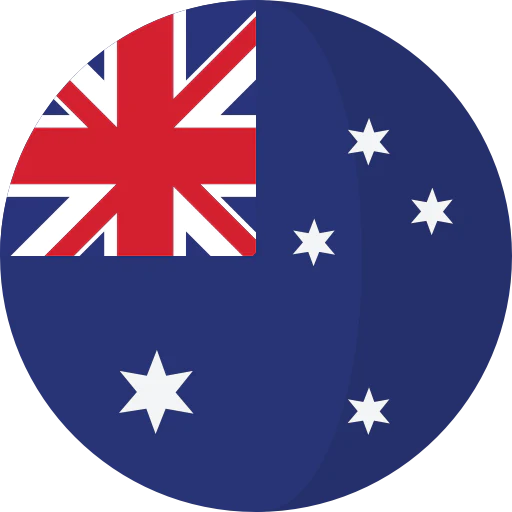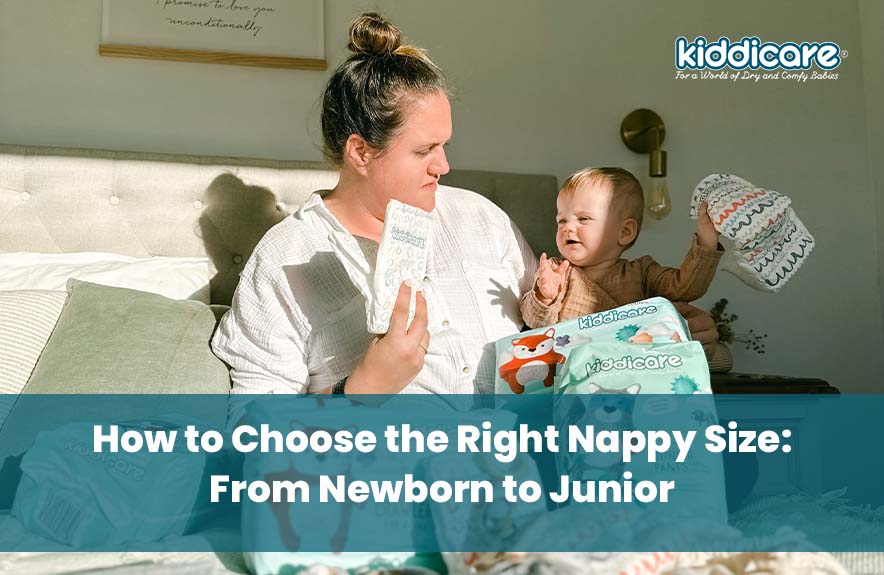As a parent, one of the most crucial decisions you'll make is choosing the right nappies for your baby. The perfect nappy size is not just a matter of convenience; it directly impacts your baby's comfort, health, and sleep. With all the nappy options available, it can be overwhelming. But don't worry! We've got you covered with an easy-to-follow guide to help you choose the best nappy size for your baby, from the newborn stage to the toddler years.
The Basics: What to Know Before You Choose a Nappy Size
Before we dive into the specifics of choosing the right nappy, let's start with the basics. Choosing the right size is crucial, but there are also a few key factors that will help make your nappy decisions easier.
Nappy Sizes Aren't Just About Age
While it's tempting to pick a nappy size based on your baby's age, weight is a much better indicator. Babies come in all shapes and sizes, and even though they follow certain developmental milestones, their weight is the primary factor that should determine which nappy fits best. If your baby is on the edge between two sizes, it's usually best to opt for the larger size. This may seem counterintuitive, but it ensures a better fit and prevents leaks!
Your Baby's Growth Pattern Matters
Your little one will grow and change rapidly, especially in the first few months. That means you'll need to keep an eye on their weight and growth to make sure their nappies continue to fit snugly. Don't forget to check for any discomfort signs like red marks or leaks. Even if a nappy says it fits a specific weight range, every baby is different, and their growth pattern matters.
Don't Forget Comfort
Your baby's nappy should be snug but not too tight. If the nappy is too tight, it can cause irritation, rashes, or even leaks. On the flip side, if it's too loose, your little one could experience accidents or discomfort. Nappy sizes are designed to allow for movement while keeping everything secure, so look for a brand that provides comfort as well as functionality.
Why You Should Consider Nappy Pants
As your baby gets older and starts moving around more, you may want to switch to nappy pants. They're a great option for toddlers who are crawling, walking, and generally on the move. Nappy pants are designed to accommodate all the extra wiggling and twisting that comes with active little ones, providing you with the flexibility you need as your baby grows.
Nappy Size Guide: From Newborn to Junior
Our goal is to provide you with a comprehensive guide to choosing the right nappy size, especially in those first few months when your baby is growing at an astonishing rate. But how do you know when to size up or switch to a new nappy?
|
Kiddicare Nappy Milestone |
Baby Weight in KG |
Average Number of Nappies a day |
How long your little one may need this size |
|
Newborn Nappy |
Up to 5kg |
6-8/day |
first few weeks at most |
|
Infant Nappy |
4-7kg |
7-8/day |
up to 5 months |
|
CrawlerNappy |
6-11kg |
6-7/day |
up to 14 months |
|
Toddler Nappy |
10-14kg |
5-6/day |
up to 30 months |
|
Walker Nappy |
13-18kg |
4-5/day |
up to 30 months |
|
Junior Nappy |
16kg+ |
As needed |
up to 30 months |
1. Newborn Size (Up to 5kg)
Your baby's first few days are precious, and you want to ensure they're comfortable in every way, including when it comes to nappy changes. Most babies start with the newborn nappy size, which is designed for babies weighing up to 5kg. The nappy should fit snugly without being tight around the waist or legs.
For a newborn, leaks can happen if the nappy isn't the right size, so it's important to double-check the fit. Make sure the nappy's waistband is secure but not too tight. The nappy should also have soft leg cuffs to keep everything in place, without cutting into the skin.
Signs to Size Up:
- If you notice leaks or the nappy feels too snug around the waist or thighs, it's time to move up to the next size.
- If your baby is nearing the upper limit of the weight range for newborn nappies, they may need a larger size.
2. Infant Size (4kg - 7kg)
Once your baby starts growing and gaining weight, they'll need to move up to the infant size. These nappies are perfect for babies who weigh between 4kg and 7kg. The infant size is usually suitable for babies up to 5 months old, but again, check for any signs that it's time for a size change.
As babies grow, they become more active, so you should make sure the nappy's fit is still snug enough to prevent leaks. Keep in mind that when babies reach this stage, their bodily functions are also developing, meaning you'll need a diaper that provides extra absorbency for more extended periods.
Signs to Size Up:
- Leaks or the nappy feels too tight.
- Baby is getting close to the top of the weight range.
3. Crawler Size (6kg - 11kg)
Around the 6-month mark, your baby will likely be crawling or getting ready to start. This is the time when you'll move to the crawler size, which is designed for babies between 6kg and 11kg. As your baby becomes more mobile, the nappy needs to be more flexible, providing support without restricting movement. The crawler nappy is built to handle all the wiggles and squiggles of an active little one.
If your baby is starting to crawl, look for nappies that are designed for active babies, with extra flexibility and absorbency. The waistband should also stay secure during all movements, and the nappy should have a fit that hugs the body without leaving marks.
Signs to Size Up:
- Your baby is getting close to the upper end of the size range.
- Leaks are happening more frequently.
- The nappy is too tight around the waist or legs.
4. Toddler Size (10kg - 14kg)
Once your baby reaches around 10kg, they'll likely be well into their toddler years. This is when the toddler-size nappies come into play. At this stage, your little one is likely starting to walk and move around more, so it's essential that the nappy fits well and allows for free movement. You'll want to check for signs that the nappy is still absorbing enough and not becoming too bulky as your baby grows.
Toddler-sized nappies are also designed to be a little more absorbent, as babies of this age usually go longer between changes. Be sure to check for leaks and monitor how the nappy fits around your baby's waist and legs to ensure it's still providing a good level of protection.
Signs to Size Up:
- If your baby is nearing the top end of the weight range for the toddler size.
- The nappy is leaving marks or causing discomfort.
5. Walker Size (13kg - 18kg)
Once your child is walking confidently, it's time to upgrade to the walker nappy. These nappies are made for babies weighing between 13kg and 18kg, usually between the ages of 18 months and 3 years. At this stage, the nappy needs to fit securely and accommodate the additional activity and movement.
Walker nappies tend to be more robust and provide extra absorbency to handle the longer intervals between nappy changes as your toddler's bladder control improves. The fit should remain snug around the legs and waist to prevent any accidents.
Signs to Size Up:
- If your baby is getting close to 18kg and the nappy seems a bit too tight.
- Leaks or frequent accidents.
6. Junior Size (16kg+)
Once your child reaches the Junior nappy size, they'll likely be well on their way to potty training. Junior nappies are designed for babies over 16kg and can be used until your toddler is fully potty trained. These nappies are ideal for active children who need maximum absorbency while staying comfortable.
Junior nappies are great for longer nights or longer trips out of the house. You'll also find that they are typically more flexible and breathable, offering a fit that supports the natural movements of your growing child.
Signs to Size Up:
- Leaks or discomfort signs.
- If your child is close to potty training, this may be the last size before transitioning.
The Importance of Comfort: Keeping Your Baby Happy and Dry
While choosing the right nappy size is essential for preventing leaks, comfort is just as crucial. A nappy that fits well should:
- Have a snug fit around the waist and legs to avoid leaks.
- Move with your baby, providing freedom for crawling, walking, or any other movements.
- Be soft and gentle on sensitive skin to prevent rashes or irritation.
- Absorb moisture quickly to keep your baby dry for more extended periods.
At Kiddicare, we ensure that our nappies are not only the proper size but also comfortable, soft, and absorbent, so your baby can enjoy their day without any discomfort.
Tips for Nappy Success
-
Size Up When Needed: Don't wait until leaks happen. If your baby is between sizes, opt for the larger size for better comfort and leak protection.
-
Monitor Comfort: Always check for any signs of discomfort, such as red marks or leaks. If your baby seems irritated, it's time for a new size.
-
Keep Extra Nappies on Hand: Babies can go through 8–10 nappies a day, so always have a stockpile to avoid running out.
-
Use Nappy Pants for Toddlers: As your baby starts to move more, nappy pants provide added flexibility and make changes quicker and easier.
Ready to Find the Perfect Fit?
Choosing the right nappy size may seem like a small task, but it makes a world of difference in your baby's comfort and health. With Kiddicare's nappy sizes designed to accommodate your child from newborn to toddler, you can be sure your little one is always in the best fit.
And don't forget - Kiddicare offers free nappy samples so you can try before you buy. It's a great way to ensure you're getting the perfect nappy for your baby's needs!
Summary
Choosing the right nappy size for your baby is one of the most critical aspects of ensuring their comfort and well-being. As your little one grows, their nappy needs will change, and staying on top of their growth milestones will help you provide the perfect fit at every stage. From the snug and secure fit of newborn nappies to the absorbent and flexible nappy pants for active toddlers, the right nappy ensures your baby stays dry, comfortable, and happy.
At Kiddicare, we understand how overwhelming the decision-making process can be for parents, which is why we've created a simple nappy size guide to make it easier for you. By focusing on your baby's weight, movement, and comfort, you'll know precisely when to size up or switch to a new nappy.
As you navigate the world of nappies, remember that your baby's comfort is paramount. Keep an eye on their growth and always look for signs that it's time to adjust the size for the best possible protection. With the right nappy size, you can ensure your little one stays happy, dry, and ready for the adventures ahead!





